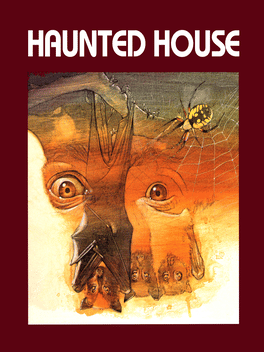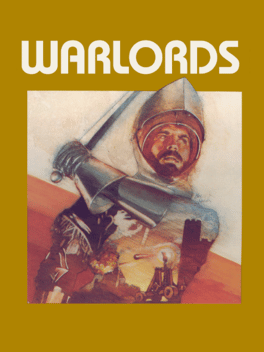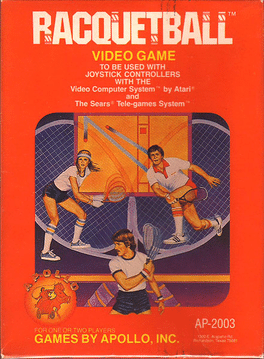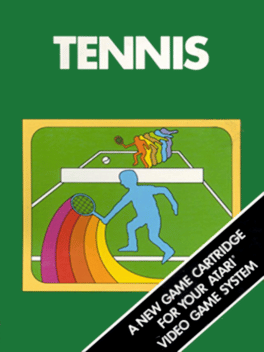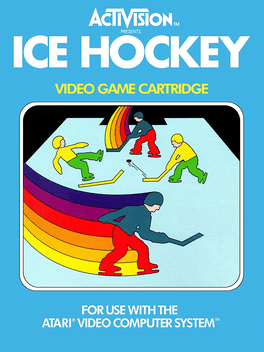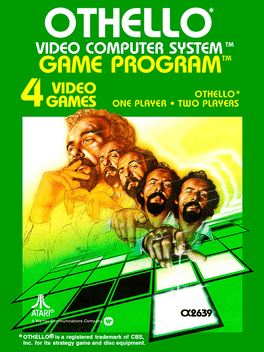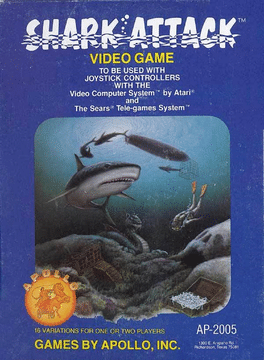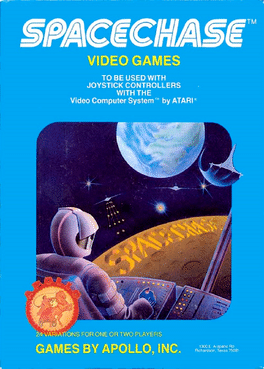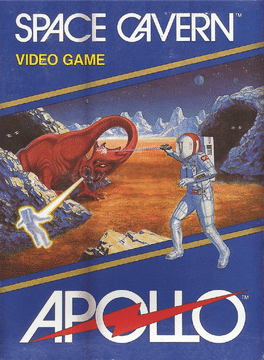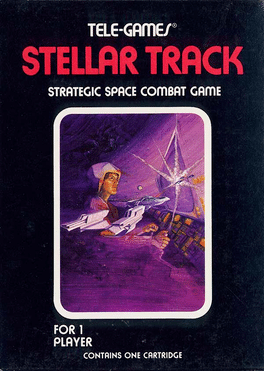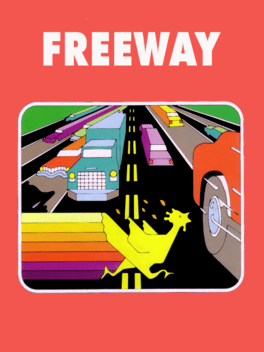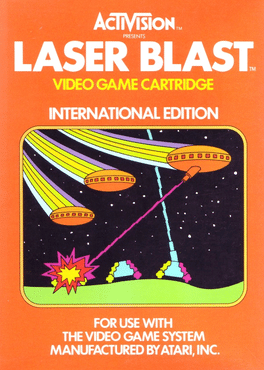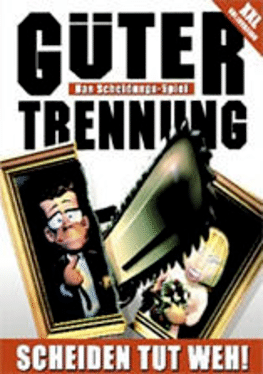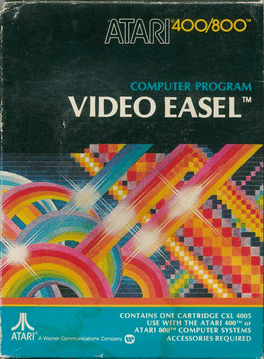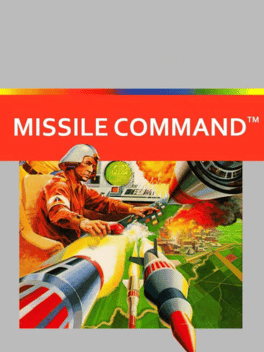New Atari2600 Games - Page 26
-
Tax Avoiders
1982
Tax Avoiders
1982
You are John Q and you want to be rich. In this game, you start out on the income screen where you try to collect the money (dollar signs) while avoiding the governmental red tape (look like red snakes). You have only one year to get your money and invest it. Each second, a day goes by. My, how time flies. Once a season, you are sent to the investment/tax shelter screen, where you must collect an icon representing an investment and then grab your portfolio (briefcase). Investments have a 50/50 chance of making or losing money. Also on this screen is a character whose color changes. What color he is determines who he is: Black=Eggie, the IRS agent. If he catches you, he will audit you. In these audits, you always lose. You are then taxed at 50% of your income and sent back to the income screen.There are no appeals to tax court. Pink=Waggie, the CPA. If he catches you (or you go to him), he will charge you $1,000.00 but whatever tax sheltered investment you have, he will put you in a better one. Green=Toodles, the -
Super Challenge Baseball
1982
The object of the game is to score the most runs in 9 innings or extra innings to a decision. Most professional baseball rules apply - 3 strikes for an out, 4 balls for a walk, first 2 fouled balls count as strikes. Each player controls an 8-man team. One team fields while the other team is up to bat. Home runs, force-outs, double and triple plays can all be made. Batter up! -
Super Challenge Football
1982
The object of the game is to out-score your opponent. There's passing, rushing, blocking, and touchdowns! Simulated 15 minute quarters. You set both offense and defense. Individual control of both the quarterback and linebacker. -
Haunted House
1982
Haunted House
1982
star 7.1Haunted House is an Atari 2600 video game written by James Andreasen and published by Atari, Inc. in February 1982. The player, represented by a pair of eyes, must navigate the haunted mansion of the late Zachary Graves to recover the three pieces of an urn. The game has been identified as one of the earliest examples of the survival horror genre. -
Warlords
1981
-
Super Breakout
1981
Super Breakout
1981
Atari 2600 port of Super Breakout. In Super Breakout, there are three different and more advanced game types from which the player can choose: Double gives the player control of two bats at the same time—one placed above the other—and two balls. Losing a life occurs only when both balls go out of play, and points are doubled while the player is able to juggle both balls without losing either. Cavity retains the single bat and ball of Breakout, but two other balls are enclosed on the other side of the wall, which the player must free before they, too, can be used to destroy additional bricks. Points are increased for this, but triple points are available if the player can keep all three balls in play. Progressive also has the single bat and ball, but as the ball hits the paddle, the entire wall gradually advances downwards step by step, gaining in speed the longer the ball lasts in play. -
Asteroids
1981
Asteroids
1981
star 6.1Asteroids for the Atari 2600 is a port of the arcade space shooter released in November 1979. The player controls a spaceship in an asteroid field which is periodically traversed by flying saucers. The objective of the game is to destroy both, asteroids and saucers. The triangular ship can rotate left and right, fire shots straight forward, and thrust forward. Once the ship begins moving in a direction, it will continue in that direction for a time without player intervention unless the player applies thrust in a different direction. The ship eventually comes to a stop when not thrusting. The player can also send the ship into hyperspace, causing it to disappear and reappear in a random location on the screen, at the risk of self-destructing or appearing on top of an asteroid. -
Racquetball
1981
Racquetball
1981
To serve, press the red button. You hit the ball by moving your player to where the shadow of the ball is about level with your feet. The racquet will swing automatically. When you serve, the ball must hit the front wall before it hits the floor. Your opponent can then hit the ball before it lands on the floor or he can let it bounce but you can only let it bounce once. It cannot bounce twice. You serve every time until you miss. If you are serving and your opponent misses, you get one point. You can only get points on rounds where you serve. First player to twenty-one points, wins. -
Tennis
1981
Tennis
1981
star 4.5Tennis offers singles matches for one or two players; one player is colored pink, the other blue. The game has two user-selectable speed levels. When serving and returning shots, the tennis players automatically swing forehand or backhand as the situation demands, and all shots automatically clear the net and land in bounds. The first player to win one six-game set is declared the winner of the match (if the set ends in a 6-6 tie, the set restarts from 0-0). This differs from professional tennis, in which player must win at least two out of three six-game sets. -
Ice Hockey
1981
Ice Hockey
1981
star 5.1Ice Hockey is a game of two-on-two ice hockey. One player on each team is the goalie, and the other plays offensive (although, the goalie is not confined to the goal). As in the real sport, the object of the game is to take control of the puck and shoot it into the opposing goal to score points. When the puck is in player control, it moves left and right along the blade of the hockey stick. The puck can be shot at any of 32 angles, depending on the position of the puck when it's shot. Human players take control of the skater in control of (or closest to) the puck. The puck can be stolen from its holder; shots can also be blocked by the blade of the hockey stick. -
Othello
1981
Othello
1981
Othello is a conversion of the board game. Each player tries to fill the game board with as many discs of his color as possible. On each turn the player places a disc on the board by selecting a location where the opponents discs will become trapped between two of his discs. The trapped discs are flipped over to the players color. The game ends when the board is filled or time runs out, and the player with the greatest number of his color discs on the board wins. Two players can play against each other, or one player against the computer. -
Shark Attack
1981
Shark Attack
1981
You are a diver in an underwater maze. Throughout the maze are valuable diamonds, and your goal is to retrieve as many as you can. In the middle of the screen is a shark cage where you begin. As you collect diamonds you need to bring them back to the shark cage in order to earn points. Swimming back and forth constantly is a deadly shark. If the shark encounters any of the diamonds, it will eat them; likewise you can also be eaten by the shark, causing you to lose a life. You have no defense against the shark, however you are immune if you are in the shark cage and the doors are closed. Somewhere in the maze the Loch Ness monster remains hidden. If you disturb the monster, it will continuously chase you unless you can lead it back into one of the caves located in the corners of the screen. -
Spacechase
1981
Spacechase
1981
You are on a moon-based scouting mission in a Mark 16 Starcruiser. Suddenly, enemy alien ships teleport in and start firing neutron missiles, which can destroy you upon impact. You must destroy enemy ships until reinforcements arrive from Earth. The enemy also have laser-directed heat-seeking proton missiles which are fired sparingly. Be aware that as the battle progresses, the aliens will become more desperate and will use the laser-directed heat-seeking proton missiles more often. -
Space Cavern
1981
Space Cavern
1981
As a commander of a spaceship you explore an unknown planet and are soon attacked by its inhabitants - the Electrosauri. You are shot at from above as well as from the sides and it becomes increasingly difficult to fend off the attackers the further the game progresses. The game allows the player to play several variations (e.g. difficulty level, number of enemies on screen, attack patterns etc.). -
Stellar Track
1981
Stellar Track
1981
Stellar Track is a text- and turn-based strategy game where the player controls a Terran Super Warship that must clear out alien ships from all quadrants of a galaxy. It was a conversion of a college mainframe Star Trek game released by Sears in 1981. It is a suitably primitive game where you have to run scans to locate enemies and starbases on a 6 x 6 galactic map. You run scans to find the enemies then must warp to their quadrant to confront them with either phasers or photon torpedoes. You use the joystick to determine the numerals of where you intend you to travel to. -
Freeway
1981
Freeway
1981
star 5.3Freeway is a video game designed by David Crane for the Atari 2600 video game console. It was published by Activision in 1981. One or two players control chickens who can be made to run across a ten lane highway filled with traffic in an effort to "get to the other side." Every time a chicken gets across a point is earned for that player. If hit by a car, a chicken is forced back either slightly, or pushed back to the bottom of the screen, depending on what difficulty the switch is set to. The winner of a two player game is the player who has scored the most points in the two minutes, sixteen seconds allotted. The chickens are only allowed to move up or down. A cluck sound is heard when a chicken is struck by a car. Comparisons are often made to Frogger, which has also features crossing a street filled with moving vehicles. Similarities did help sales when Frogger was popular in the arcades and a home version was not yet available. Freeway was made available on Microsoft's Game Room service for its Xbox 360 consol -
Laser Blast
1981
Laser Blast
1981
star 5.5The object of Laser Blast is to destroy a series of land-based enemies. The player controls a fleet of flying saucers, operating one at a time. On the planet surface below are a group of three mobile laser bases, guarded by an invisible force field that prevents the player's saucer from getting too close to the surface. Both the player and the enemy bases are armed with laser blasters, which may fire a single continuous beam at a time. If the player's saucer is hit, it will lose altitude and crash to the ground; however, the player may direct this fall, potentially into one of the bases, destroying it as well. Each succeeding wave of enemy bases moves faster and targets the player's saucers more quickly, while the force field becomes stronger and decreases the amount of space in which the saucer can move. Players score points for each base destroyed, with points multiplying each wave up to a maximum of 90 points per base. Players earn extra flying saucers with each 1000 points scored and may keep a maximum of six e -
Peter Penguin
1981
Peter Penguin
1981
Peter Penguin is treasure-hunting in the eternal ice of the Arctic. But watch out! His pursuers, the snow monsters, are dogging his footsteps. -
Video Life
1981
Video Life
1981
Video Life is a rare video game for the Atari 2600. It is a version of the zero-player cellular automaton known as Conway's Game of Life. Video Life was only available through a special mail order offer to owners of CommaVid's Magicard, which itself is considered to be one of the rarest Atari 2600 cartridges ever released. According to original CommaVid co-owner Irwin Gaines, only 20 cartridges or less of Video Life were ever made. Editors of AtariAge estimate approximately 500 cartridges were produced. A report in the Chicago Reader by Jeffrey Felshman estimates that cartridges would sell for as much $3000 at the time. -
Missile Command
1981



